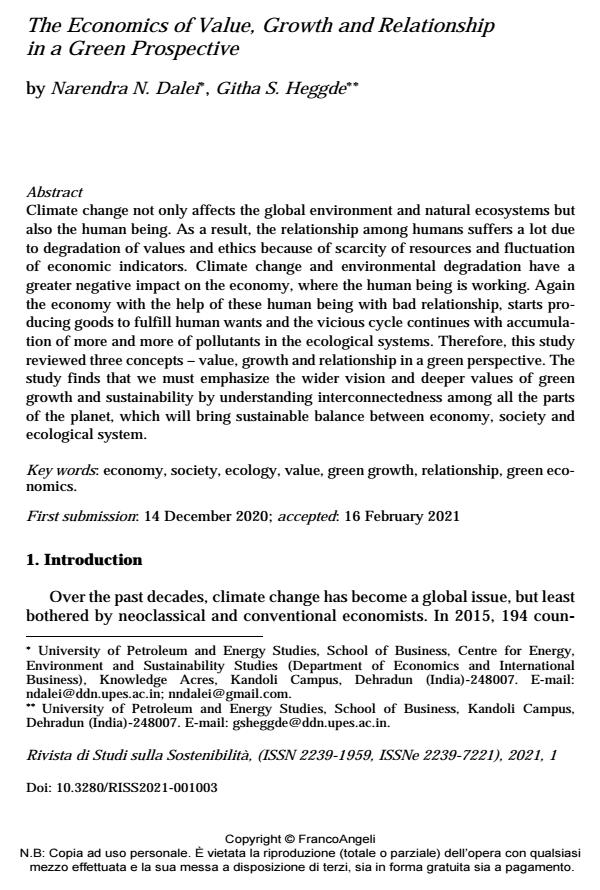The Economics of Value, Growth and Relationship in a Green Prospective
Titolo Rivista RIVISTA DI STUDI SULLA SOSTENIBILITA'
Autori/Curatori Narendra N. Dalei, Githa S. Heggde
Anno di pubblicazione 2021 Fascicolo 2021/1
Lingua Inglese Numero pagine 13 P. 29-41 Dimensione file 86 KB
DOI 10.3280/RISS2021-001003
Il DOI è il codice a barre della proprietà intellettuale: per saperne di più
clicca qui
Qui sotto puoi vedere in anteprima la prima pagina di questo articolo.
Se questo articolo ti interessa, lo puoi acquistare (e scaricare in formato pdf) seguendo le facili indicazioni per acquistare il download credit. Acquista Download Credits per scaricare questo Articolo in formato PDF

FrancoAngeli è membro della Publishers International Linking Association, Inc (PILA)associazione indipendente e non profit per facilitare (attraverso i servizi tecnologici implementati da CrossRef.org) l’accesso degli studiosi ai contenuti digitali nelle pubblicazioni professionali e scientifiche
Climate change not only affects the global environment and natural ecosystems but also the human being. As a result, the relationship among humans suffers a lot due to degradation of values and ethics because of scarcity of resources and fluc-tuation of economic indicators. Climate change and environmental degradation have a greater negative impact on the economy, where the human being is work-ing. Again the economy with the help of these human being with bad relationship, starts producing goods to fulfill human wants and the vicious cycle continues with accumulation of more and more of pollutants in the ecological systems. Therefore, this study reviewed three concepts - value, growth and relationship in a green per-spective. The study finds that we must emphasize the wider vision and deeper val-ues of green growth and sustainability by understanding interconnectedness among all the parts of the planet, which will bring sustainable balance between economy, society and ecological system.
Parole chiave:Economy, society, ecology, value, green growth, relationship, green economics.
- Utilizing Technology for Sustainable Resource Management Solutions Kuldeep Singh, Irum Khan, pp.44 (ISBN:9798369323465)
- Socio-economic development through self-help groups in rural India – a qualitative study Vinay Kandpal, in Qualitative Research in Financial Markets /2022 pp.621
DOI: 10.1108/QRFM-10-2021-0170
Narendra N. Dalei, Githa S. Heggde, The Economics of Value, Growth and Relationship in a Green Prospective in "RIVISTA DI STUDI SULLA SOSTENIBILITA'" 1/2021, pp 29-41, DOI: 10.3280/RISS2021-001003